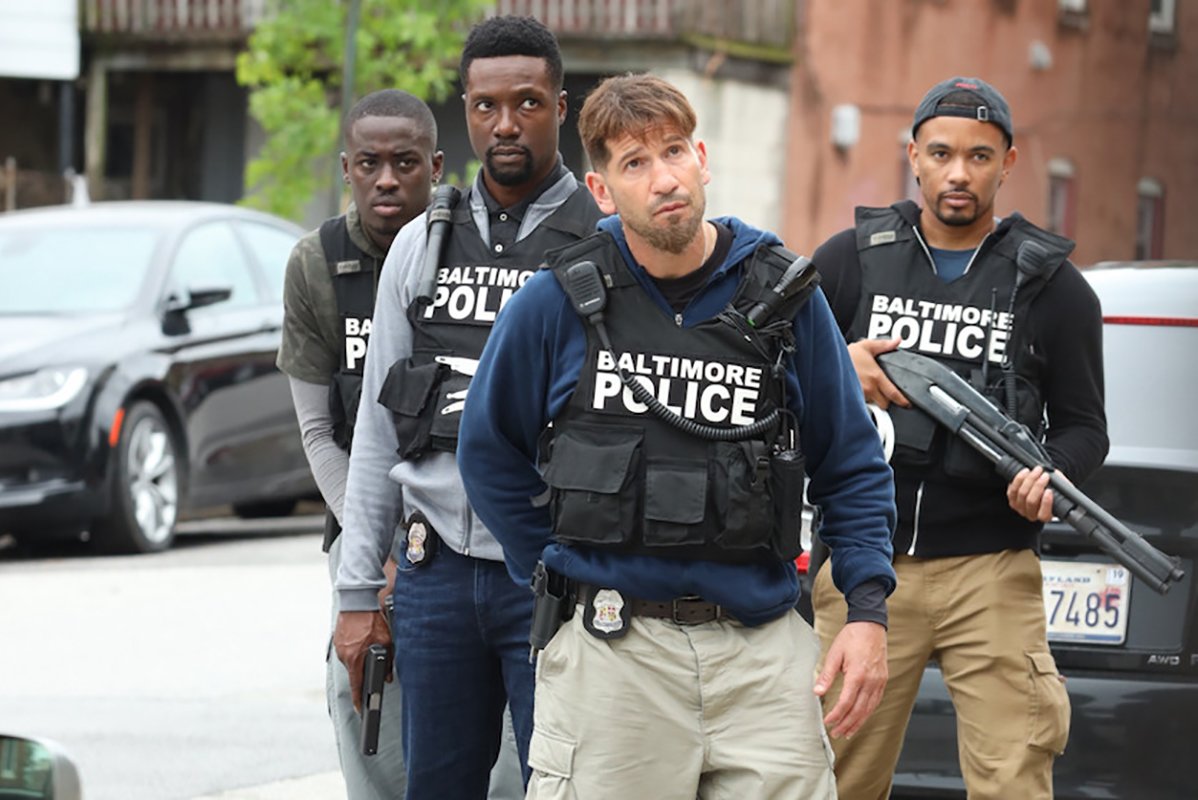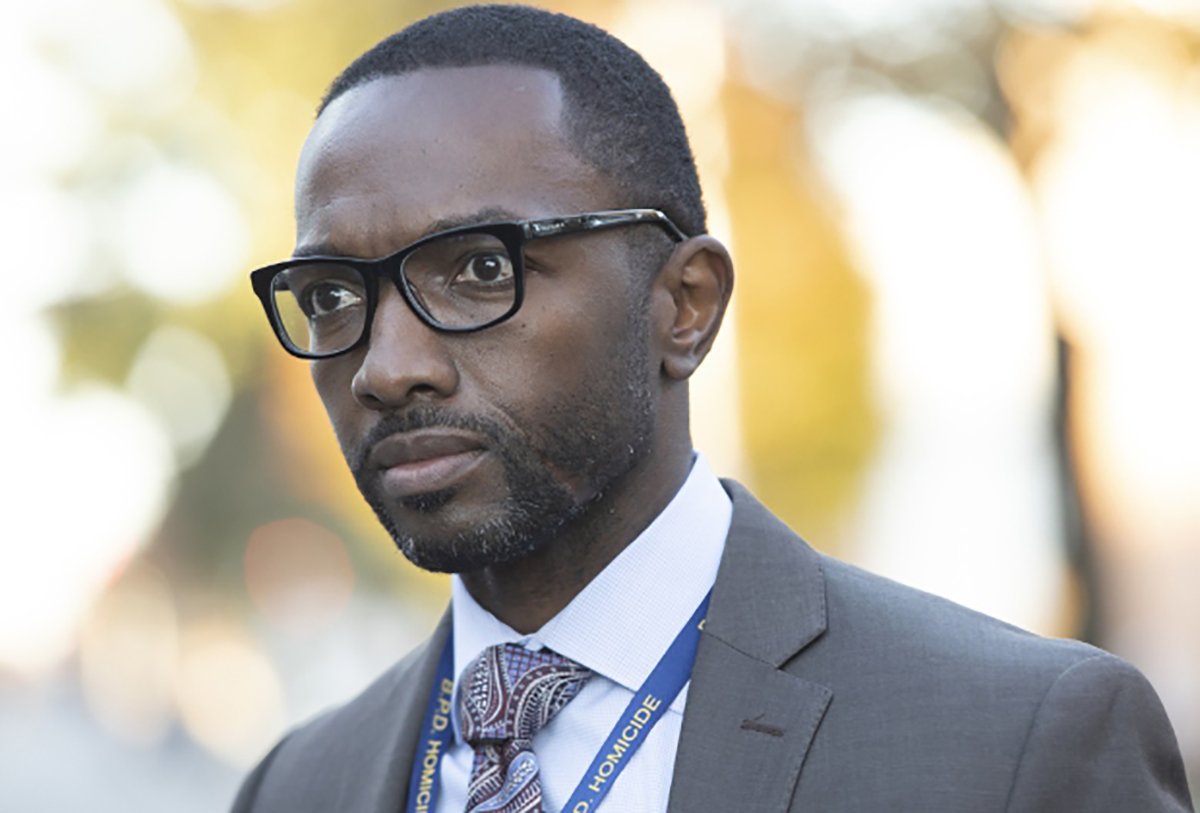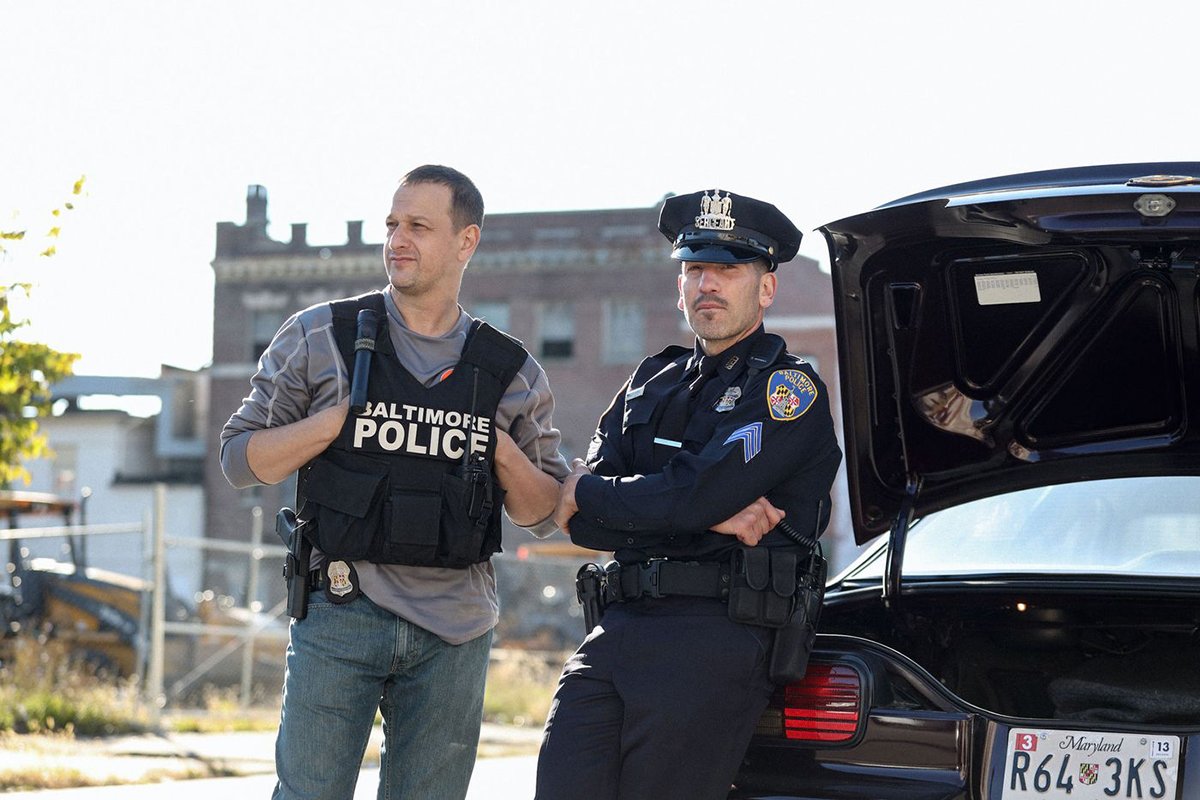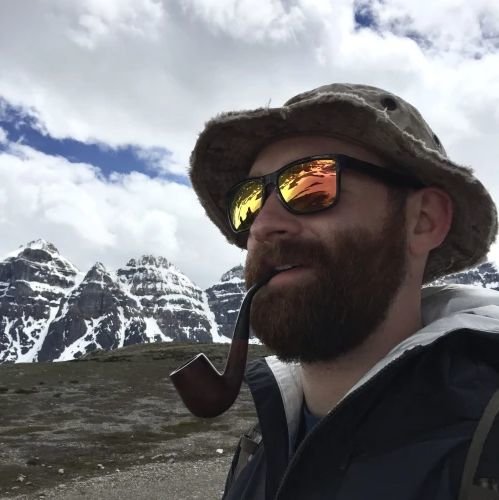
We Own This City is currently streaming on HBO. Photo courtesy of HBO.
There’s a tragic moment in the final episode of We Own This City when Baltimore Police Detective Sean Suiter, played by Jamie Hector, makes the fateful choice to take his own life and stage it as a line-of-duty death. Suiter, shown momentarily hiding behind a van while he pumps himself up, takes a final lungful of air and runs down an alley, shouting at nobody, “Stop! Police! Stop!” before firing three shots from his service weapon, once into his own head.
His partner, Detective David Bomenka, chases after Suiter — who was obscured by brick row houses when he fired the fateful shot — but when he catches up to Suiter, the 18-year veteran of the Baltimore Police Department is already dying. The real Suiter would be officially pronounced dead at Maryland Shock Trauma within hours of the shooting.

It’s the episode’s most heartbreaking scene, as Suiter is one of the few characters with a badge in HBO’s quasi-sequel to The Wire who selflessly serves his community without becoming corrupted in the process. Suiter’s death remains mired in controversy because of the fact that he was expected to testify before a grand jury regarding the notorious Gun Trace Task Force the very next day. Despite the community’s suspicions, the Baltimore Police Department officially deemed Suiter’s death a suicide.
But even though the scene packs an emotional punch worthy of the show’s finale, there’s another scene in the final episode that reveals the true intentions of the six-episode miniseries, and it doesn’t include a single member of the GTTF that dominates the show’s storyline.
There’s a brief exchange near the beginning of the episode in which Nicole Steele, an investigator from the Department of Justice’s Civil Rights Division who is charged with creating a consent decree in the wake of the Freddie Gray riots, and Brian Grabler, a retired Baltimore detective who now teaches recruits at the police academy, discuss the reality of crime and corruption in not just Baltimore, but all of America’s major cities.

“What doesn’t this consent decree say?” Grabler asks Steele. “What is the Justice Department unwilling to admit? What are the police trying to do? What’s the mission?”
Steele, who is the show’s only major fictional character, admits to Grabler that the war on drugs — and the problems it created — is the elephant in the room the consent decree fails to address. It’s the war on drugs that spurred mass incarceration, police corruption, and the blooming violence that plagues cities like Baltimore.
“Exactly,” Grabler responds to Steele’s admission. “And in a war, you need warriors. In a war, you have enemies. In a war, civilians get hurt and nobody does anything. In a war, you count the bodies and then you call them victories. Is the Justice Department, or even the Office of Civil Rights, ready to declare that we long ago lost this war? That we’ve achieved nothing but full prisons, and routine brutality, and a complete collapse of trust between police departments and their cities?”

The monologue is brief but poignant. All of the evil and tragedy that permeates the miniseries can be traced back to the ill-conceived war on drugs.
Episode one begins with a bright-eyed Wayne Jenkins, portrayed by Jon Bernthal, giving a speech to new recruits about how to serve their communities with justice and fairness. He makes it abundantly clear that there is zero tolerance for corruption on his elite Gun Trace Task Force.
The declaration is a bit baffling to audiences who know the series is based on the fact that the Gun Trace Task Force became one of the most corrupt police units in history. Jenkins is full of optimism in episode one, which begs the question: How did an officer so upfront about remaining ethical fall so far from grace? It’s not until Grabler’s speech at the end of the series that they’re given their answer.
Few television shows surrounding law enforcement dare to venture beyond surface-level drama, with easily digestible entertainment for audiences who don’t want much more than to watch good triumph over evil. We Own This City leaves the cookie-cutter characters and predictable formulas of prime-time police shows behind and instead demands audiences confront the reality of modern law enforcement in the twilight hours of the war on drugs.
Read Next:

Mac Caltrider is a senior staff writer for Coffee or Die Magazine. He served in the US Marine Corps and is a former police officer. Caltrider earned his bachelor’s degree in history and now reads anything he can get his hands on. He is also the creator of Pipes & Pages, a site intended to increase readership among enlisted troops. Caltrider spends most of his time reading, writing, and waging a one-man war against premature hair loss.
BRCC and Bad Moon Print Press team up for an exclusive, limited-edition T-shirt design!
BRCC partners with Team Room Design for an exclusive T-shirt release!
Thirty Seconds Out has partnered with BRCC for an exclusive shirt design invoking the God of Winter.
Lucas O'Hara of Grizzly Forge has teamed up with BRCC for a badass, exclusive Shirt Club T-shirt design featuring his most popular knife and tiomahawk.
Coffee or Die sits down with one of the graphic designers behind Black Rifle Coffee's signature look and vibe.
Biden will award the Medal of Honor to a Vietnam War Army helicopter pilot who risked his life to save a reconnaissance team from almost certain death.
Ever wonder how much Jack Mandaville would f*ck sh*t up if he went back in time? The American Revolution didn't even see him coming.
A nearly 200-year-old West Point time capsule that at first appeared to yield little more than dust contains hidden treasure, the US Military Academy said.












